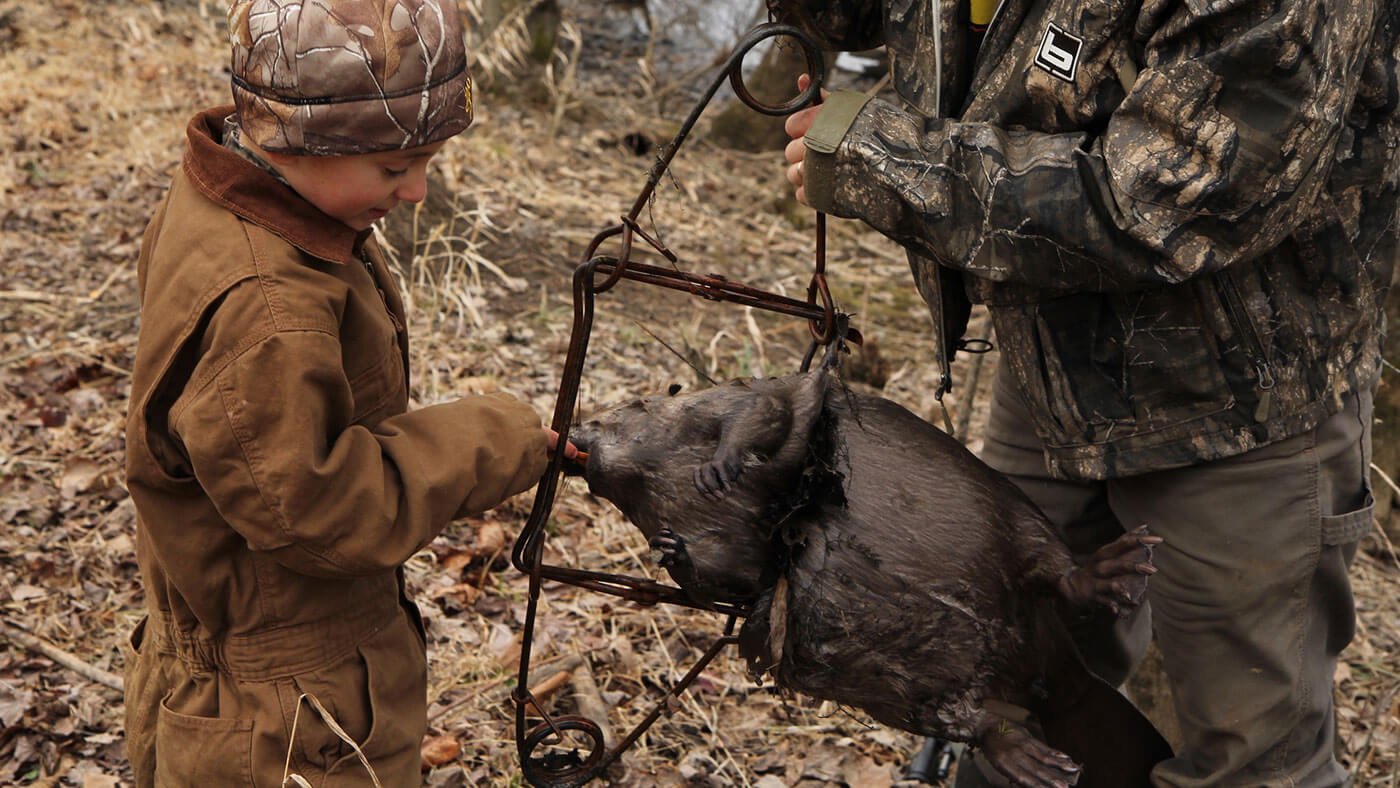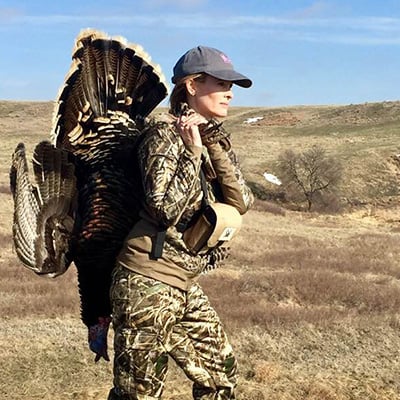- Savage Blog
- Trappers, Can You Still Sell Your Fur?
Trappers, Can You Still Sell Your Fur?

Trappers and Predator hunters wonder what to do with the beautiful coats from coyotes, bobcats, and other critters. Even with the down fur market, there are still options to sell fur.
Though the fur market isn’t what it once was, there are still buyers out there who will purchase good furs from coyotes, foxes, bobcats, and other furbearers. And if you decide not to sell them, there are plenty of good tanneries around that will prepare furs for display at home, crafts, and clothing, too. Using your fur is a worthwhile endeavor for any predator hunter or trapper, and this is your guide to get started.
Jeremiah Wood, a Maine fisheries biologist and trapper, said he started Trappingtoday.com to help trappers keep up to date on trapping-related issues, including how to make the most of the furs they harvest.
He says the fur market is likely at a historical all-time low, but to not get discouraged as there are still fur buyers needing to fill their inventory.

The Global Market for Fur
Wood explains that the fur market is now global and dominated by other countries.
“Most of the furs we harvest in this country are used in China, Russia, South Korea, Greece, Italy, and the Ukraine,” he says. “A lot has changed since the 1930s and ’40s when people in the U.S. wore fur as a fashion and status symbol. Over the years, that practice has disappeared thanks to a PR campaign against fur by the animal rights movement in the 1990s. Cultural changes have resulted in people now feeling embarrassed and ashamed to wear furs.”
Wood explains that in 2012-2014, there was a mini boom in China’s fur market. Consumption was off the charts, but that crashed due to a number of factors like slowing economic growth, the war in Ukraine, and the fashion companies choosing not to use fur.

“There used to be two be two major North American fur auction houses – North American Fur Auction and Fur Harvesters Auction Incorporated in North Bay, Ontario. A large amount of the North American fur was sold through those two auction houses. Each one would host two to three auctions a year. North American Fur Auction went out of business and Fur Harvesters Auction Incorporated now has only one or two online auctions a year.”
Where to Sell Fur
Wood says hunters and trappers can still sell fur to Fur Harvesters Auction Incorporated through agents that pick up the furs.
“They run routes and once they collect all the fur, they send them across the border at once. They do it once or twice a year and take hundreds of thousands of pelts from all over the country. They grade and sort fur into different lots based on similarly graded furs. Large lots of furs that are the same size, color, and quality get better prices. You typically get paid after the auction is completed. This year, for the first auction, the fur was dropped off in January. It won’t sell until March and you’ll get paid in April or May.”
But the large auction house isn’t your only option for selling your fur.
“If you are lucky, you may have a local country fur buyer in your area,” Wood says. “Those used to be everywhere, but they are pretty much gone. But a few locals still do it. The best way to find out where to sell fur is to contact your local trapper or fur harvester association. Almost every state has a trapper or fur harvest association that will have an auction or two a year. Join that local association to learn more and meet new people. They also help preserve the rights of hunters and trappers.”
Wood says during those state association auctions, several of the members will get together one or two days a year and bring in three or four buyers who will go through and bid on the fur.
“The association members are a great source of knowledge. They’ll know where you can take or send your furs and will give feedback, such as how to harvest your animals or how to fix that big bullet hole in your pelt, how to skin out that animal, or the best time to harvest your animals for the best fur quality.”

Wood says there are also regional fur buyers, such as Groenewold Fur and Wool Company, which has a fur route that spans across multiple states in the Midwest and other parts of the country.
“For example, they may have a truck at the local Walmart for a few days where you can take your fur. They’ll look through it, grade it, and give you a price that you can take or leave,” Wood says.
Other regional buyers that run routes include Petska Fur in Kansas or Volk Furs in North Dakota.
There are also speculators, who buy fur hoping the demand will pick back up. They purchase wild fur and put it in cold storage until prices improve.
“Keep in mind that ranch-produced fur makes up 80 percent of the fur market,” Wood says. “What we harvest is only 20 percent. Most fur buyers purchase their mink and fox from fur ranches because they don’t care where they come from. They just care about the quality, consistency, size, and color. The ranches can produce superior quality because they can breed for it. But fur ranches are illegal in many states.”
Let’s Talk Money
Of course, the quality of your fur will usually dictate the price you can get for it, and the quality is usually better in the winter because the animals have thicker fur that time of year.
Wood’s Trapping Today website includes a 2022-2023 fur price market forecast where he predicts best-quality heavy western coyotes to bring in approximately $30-$40 per pelt, while lower-quality eastern coyotes may only bring in $10-$25 per pelt. Good-quality raccoon pelts may bring in $10-$15. Top quality beaver pelts may bring in $25 or more, but you can also sell your lower-quality beaver pelts for the hat market.
“Beaver pelts can be an exception because they can be ground up to be used as felt to make Stetson cowboy hats, so thick fur isn’t required,” Wood says.
He explains that the highest dollar amount (excluding wolf and wolverine) is given to western bobcats with clear white bellies and black spots. Their pelts are used in high-value fashion coats. When fur was at its peak, one of those pelts could sell for $1,000 or more. Now it’s dropped to the $200-$300 range for the best of the best. If you harvest a bobcat out of that range in those western states, the best you can typically hope for is $30-$60 a pelt.

Other Options for Your Fur
“Despite low demand for fur, there’s a high demand from landowners to rid their properties of varmints and predators. Those who remove beavers and coyotes for landowners hate to see those pelts go to waste. What are we supposed to do? Toss the pelt and let it rot? Many predator hunters and trappers are keeping the skins and preserving them to hang on their wall as décor, give as gifts or turn into some type of craft to sell,” Wood says. Many send their personal furs off to a tannery.
Wood says when choosing a tannery, the best thing you can do is talk to local people who harvest and work with fur. Generally, tanneries will have a long turn around. Also, remember the product you get back has a lot to do with how you prepared the animal. You need to know how to properly skin, stretch and dry the pelts to produce a good tanned product.
“The No.1 tannery in the country for trappers and hunters is Moyle Tannery in Idaho,” he says.
If you live in an area that has touristy shops, you can do well by tanning and selling your hides in those shops. If not, you can sell on eBay and other online outlets, but check your state and species regulations first. Certain species have to be tagged, depending on the state.
“In my state, most have to have a state of Maine tag. As long as they have my tag and state, it’s legal,” Wood says.

Also, check to see if there are different rules when it comes to the state of your skin/fur. There can be different regulations for raw, freshly harvested fur and for tanned fur.
While fur is much tougher to sell than it once was, you have options and you certainly don’t need to let it go to waste. Join your local trapper or fur harvester association and get actively involved to find out the best places to sell your fur. And if you just can’t get the prices you want, get creative and turn those pelts into something special that you or someone else can enjoy for years to come.


